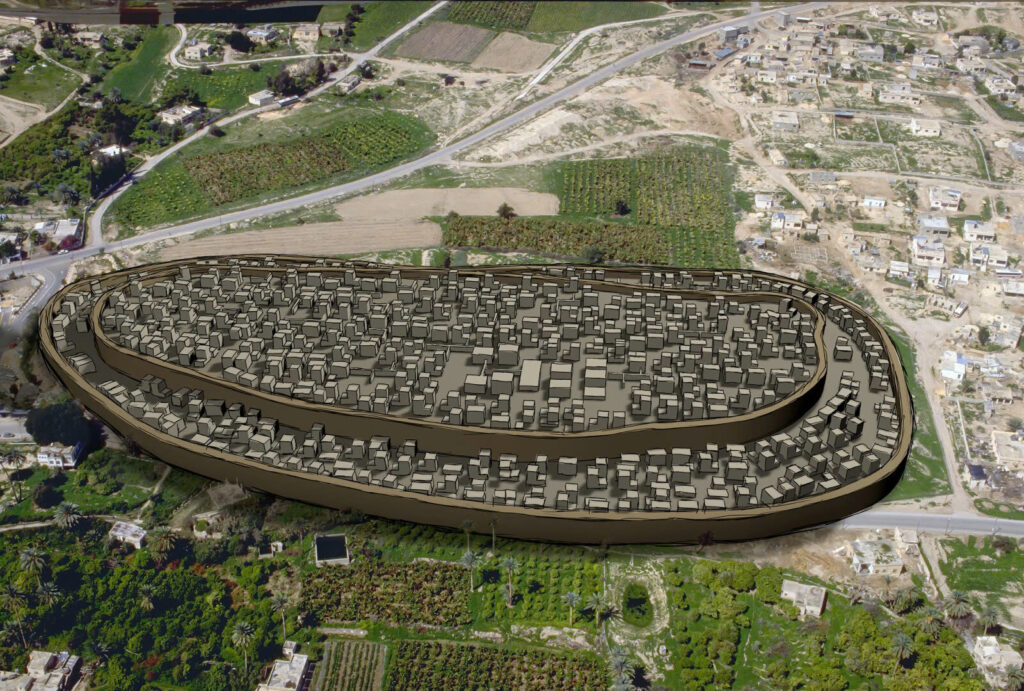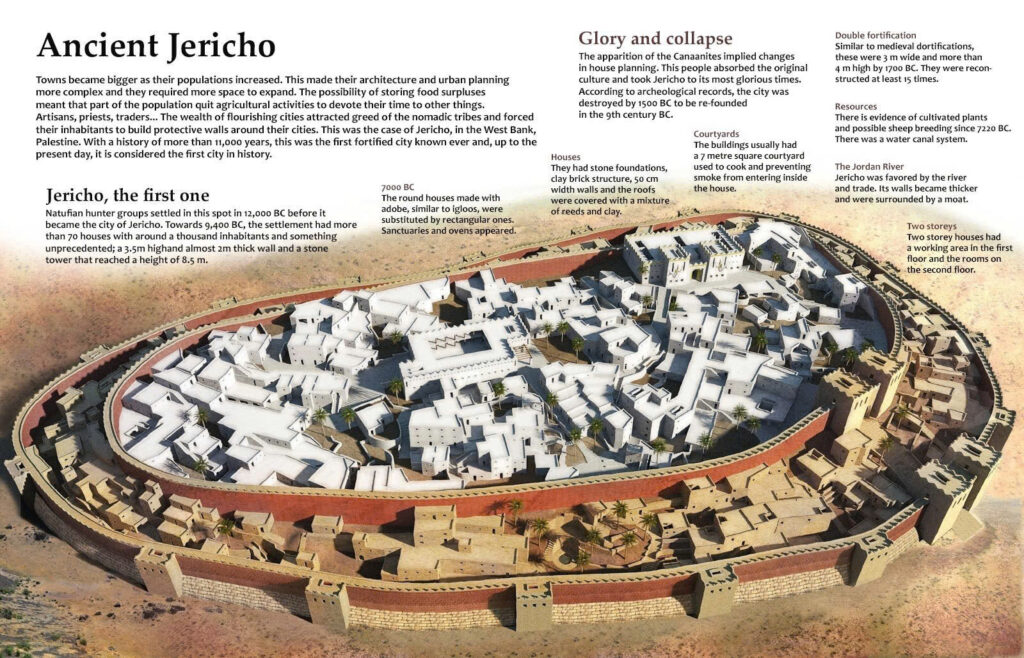The Birth of Urban Life
In the heart of the West Bank lies Jericho, a town that holds the distinction of being one of the world’s earliest continuous settlements. Its story begins around 9000 BC, marking the dawn of human civilization as we know it.

The First Walls Rise
Picture a community of 2,000 to 3,000 people, working together to build a massive stone wall around their settlement. This wasn’t just any wall – it was a testament to human ingenuity, complete with a towering stone fortification. This feat of engineering, accomplished around 8000 BC, signaled humanity’s transition from a nomadic lifestyle to settled agriculture.
Agricultural Revolution
The inhabitants of ancient Jericho were pioneers of agriculture. Excavations have unearthed grains of cultivated wheat and barley, providing tangible evidence of this revolutionary shift in human history. It’s likely that these early farmers also invented irrigation to cultivate their lands effectively.

The Pottery-less Period
Around 7000 BC, a new group arrived in Jericho, bringing with them a different Neolithic culture. Interestingly, they hadn’t yet mastered the art of pottery-making. This period lasted until about 6000 BC, followed by a millennium of sparse occupation.
The Rise, Fall, and Rebirth of Urban Jericho
The end of the 4th millennium BC saw Jericho reborn as a walled town. However, this urban revival was short-lived. By 2300 BC, nomadic groups, possibly the Amorites, disrupted city life once again. It wasn’t until the Canaanites arrived around 1900 BC that urban culture was reestablished, leaving behind rich archaeological evidence of their domestic life.

Jericho in Biblical Times
The Walls Come Tumbling Down
Jericho’s fame in biblical history stems from its dramatic conquest by the Israelites under Joshua. According to the biblical account, the city was abandoned after its destruction, only to be resettled centuries later.
Herod’s Winter Palace
Fast forward to the time of Herod the Great, who chose Jericho for his winter residence. Recent excavations have unveiled the grandeur of Herodian Jericho, including what’s believed to be part of Herod’s palace along the Wadi Al-Qilṭ.

A Tale of Three Cities
Interestingly, the Jericho of different eras occupied three distinct sites:
The Old Testament town
The Roman and New Testament city, about a mile south of the original site
The Crusader-era settlement, a mile east of the Old Testament location
Today’s modern Jericho has grown from this third site, continuing the legacy of one of the world’s oldest continuously inhabited cities.

